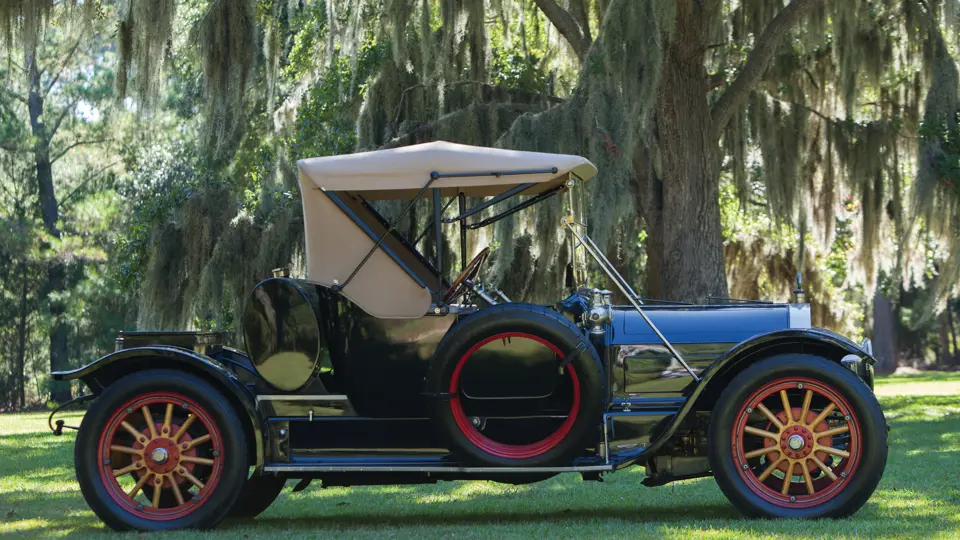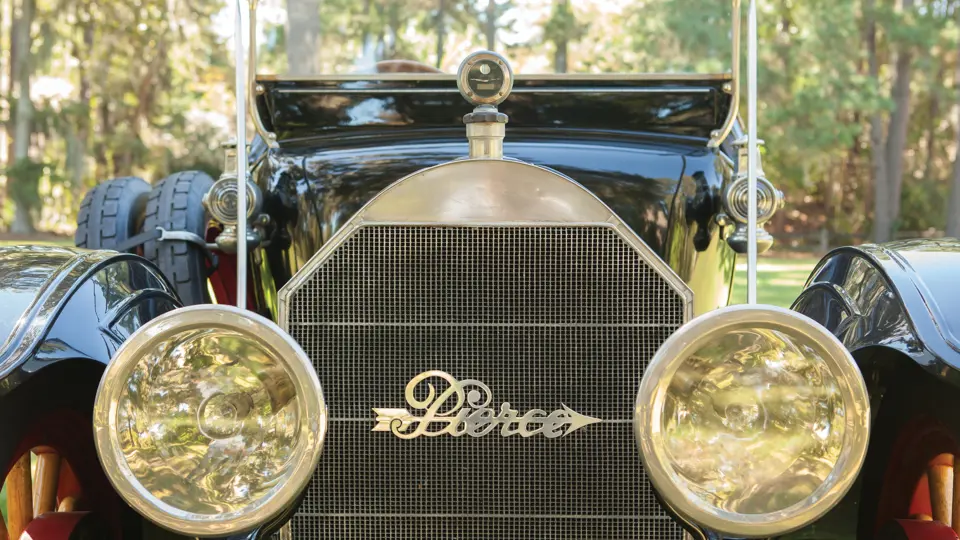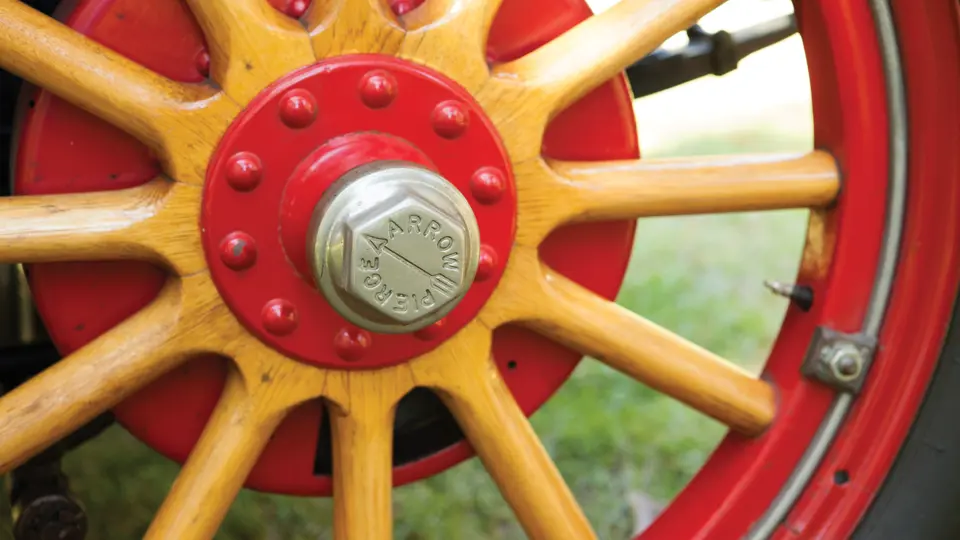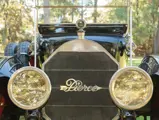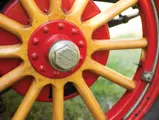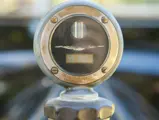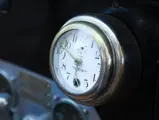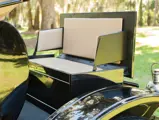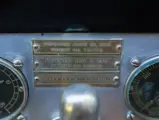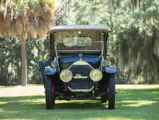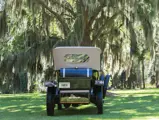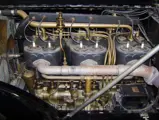38 hp, 414.7 cu. in. T-head six-cylinder engine, four-speed manual transmission, solid front axle with semi-elliptic leaf springs, live rear axle with three quarter-elliptic leaf springs, and four-wheel mechanical drum brakes. Wheelbase: 132 in.
George N. Pierce was a bicycle manufacturer, but his industrial experience was far more diverse. It began when be became a partner at Heintz, Pierce and Munschauer, a Buffalo, New York, company that made bird cages. As the 19th century progressed, the firm branched out into ice boxes and bath tubs. After Pierce bought out his partners in 1872, he renamed the company for himself and embarked on pedal-powered transportation. Taking notice of the interest in self-propelled vehicles, he built a steam car in 1900.
That November, a gasoline-powered car was operating, and in 1901, manufacture of a de Dion-engined “Motorette” began. A defining moment in the evolution of the Pierce automobile came in 1904, with the introduction of the four-cylinder Great Arrow. Pierce’s son Percy drove one in the inaugural 1905 Glidden Tour, winning the reliability contest hands down, and Pierces took the Glidden Trophy for the next four events. “Pierce” and “Arrow” became so linked in the public eye that both car and company were renamed Pierce-Arrow in 1909. By then, Pierce-Arrows, which sold for $3,050 to $7,200, had joined Packard and Peerless in comprising the “Three Ps” of luxury American motor manufacture.
The first six-cylinder Pierce was the Model 65-Q, and it was introduced in 1907. Like the fours that preceded it, the new powerplant was of T-head configuration, and it displaced an impressive 648 cubic inches. The 65-Q was built on a 135-inch wheelbase, nearly a foot longer than the largest four-cylinder model, and it weighed-in at slightly more than 4,000 pounds. The last Pierce fours were built in 1909. For 1910, there were three sixes, of 36-, 48-, and 66-rated horsepower. Then, in 1913, there came a new 38-horsepower car, which would remain in production for six years.
This Pierce-Arrow, one of seven hundred fifty first series 38s, was built in the waning days of 1912. After its assembly was complete, it was delivered new to the Schick Foundry in Belmont, California, for use by the Schick family. It was originally a four-passenger touring car, but shortly after delivery, the rear seat was removed and replaced with a 40-gallon fuel tank to enable longer journeys when gasoline was more difficult to find in rural areas. Behind the tank was a smaller fold-out “rumble” seat for two, which collapsed into an unobtrusive box. Sometime in this period, it was also given four-wheel brakes, more than a decade before they would become a standard Pierce feature. The conversion was made very neatly, using duplicates of the rear brake assemblies, and it was almost certainly done early in the car’s life.
The car remained with the Schick family until it was purchased by the vendor, from the grandson of the original owner, about five years ago. Over the years there had been a few other modifications, which included a new windshield and newer lights, with the latter coming from a circa-1918 Peerless. Fortunately, the Schicks kept all the original parts, so restoring it to correct configuration was a simple matter.
Over the last four years, the car was repainted in the original black. A new canvas top and beige leather upholstery have also been installed. The current owner has toured with it extensively, most notably on Horseless Carriage Club of America National and Reliability tours. Most recently, it completed the Grizzly Bear Tour in California in April 2013, climbing to 7,400 feet in third gear in the driving snow.
As viewed, it lacks nothing, and it is ready to show, tour, or drive for fun. Pierce-Arrow made its reputation in early 20th century touring, and this car shows why.





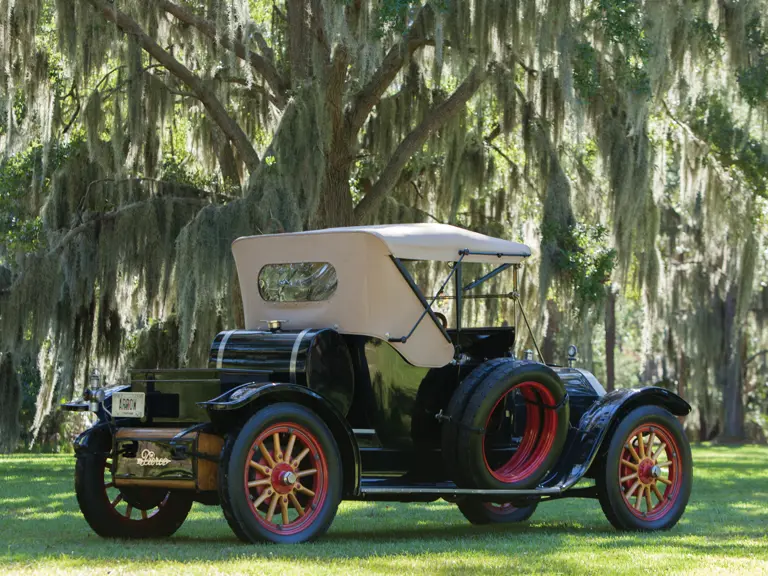
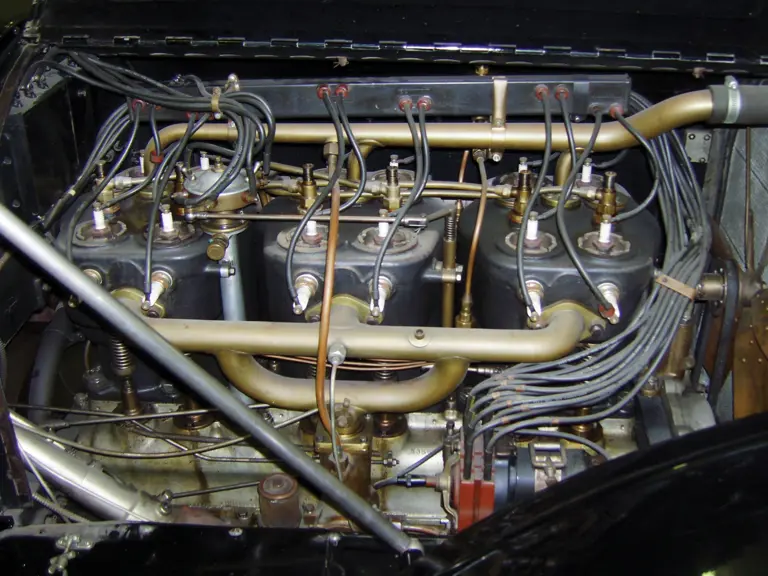
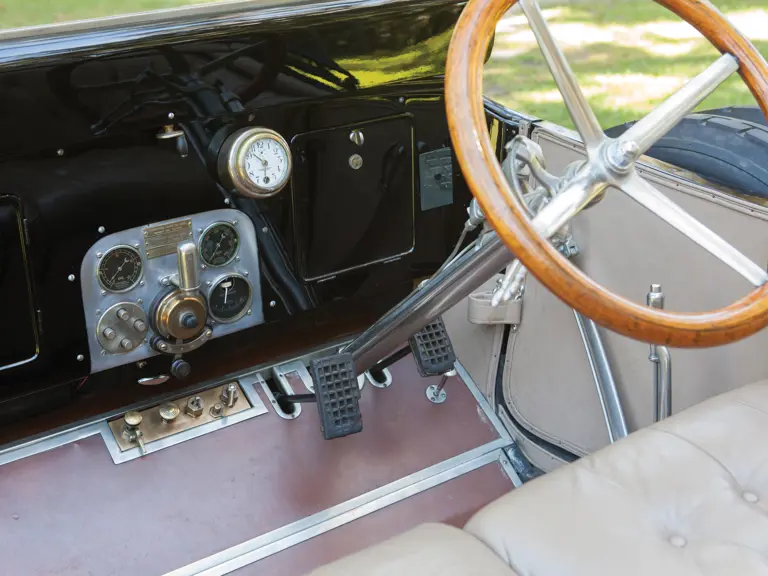

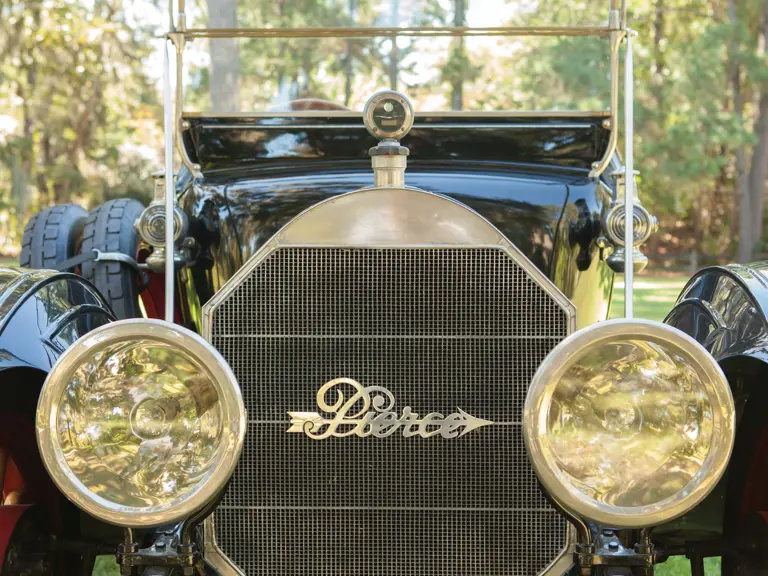
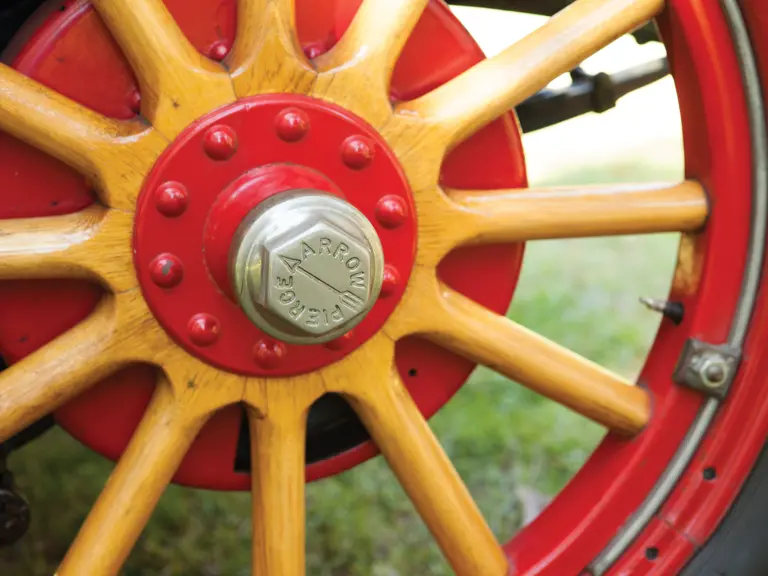
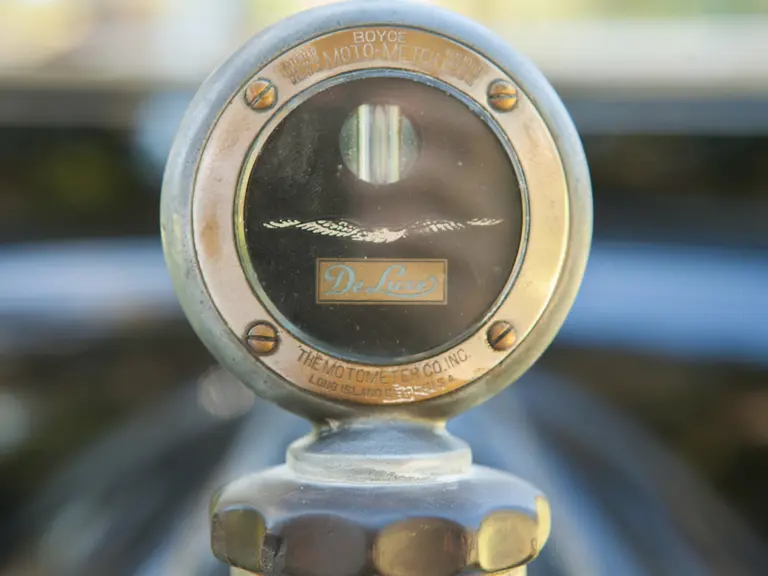
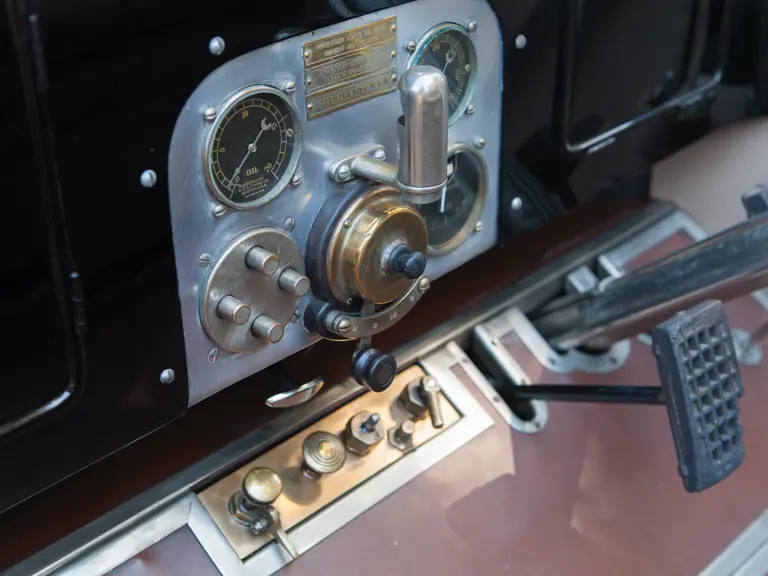

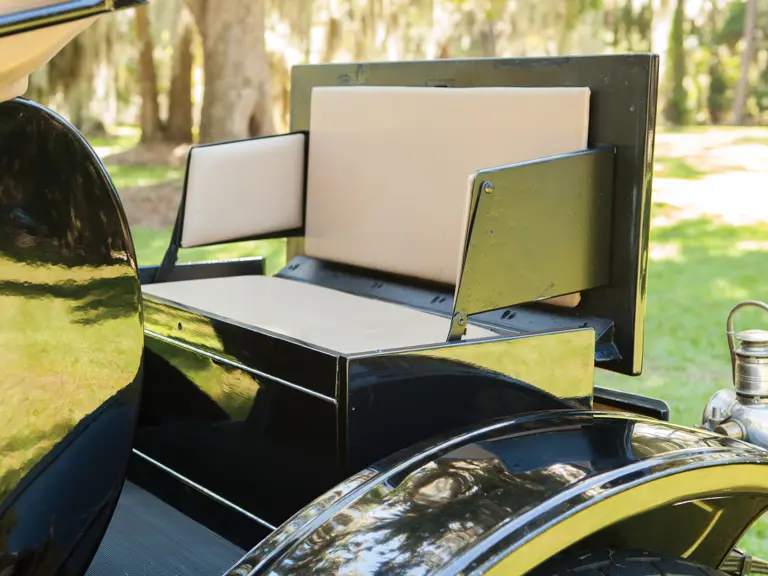

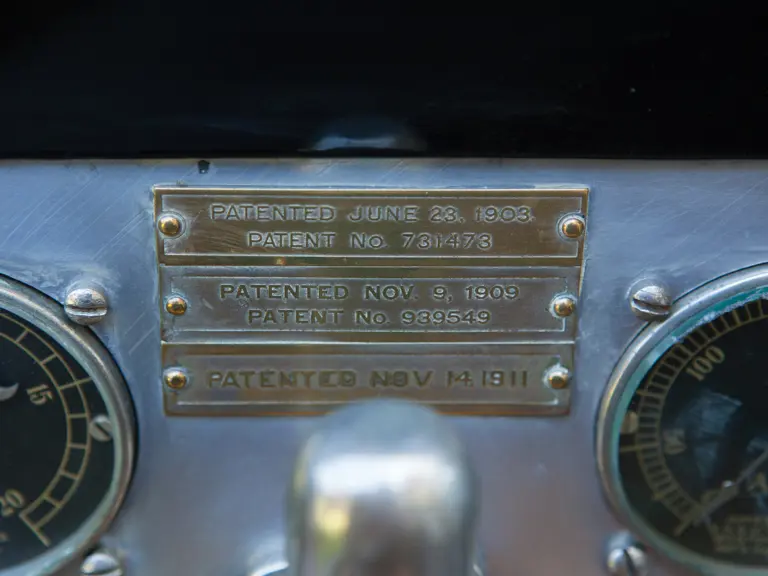
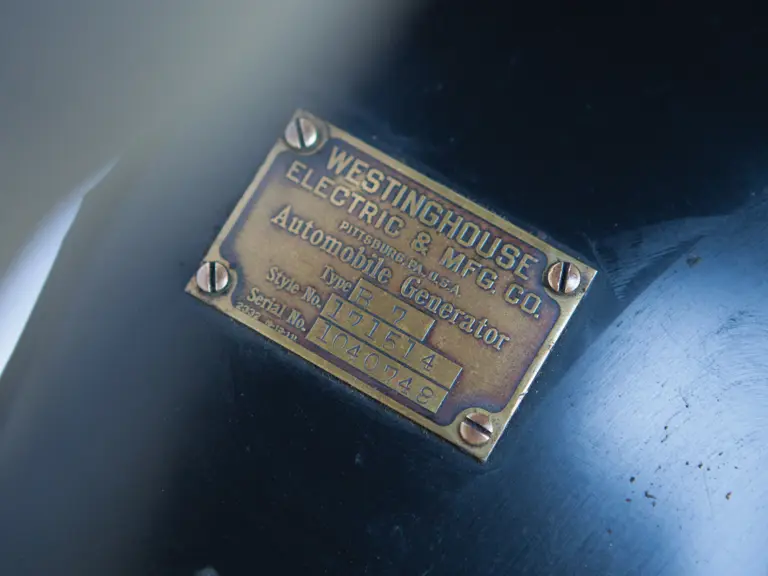
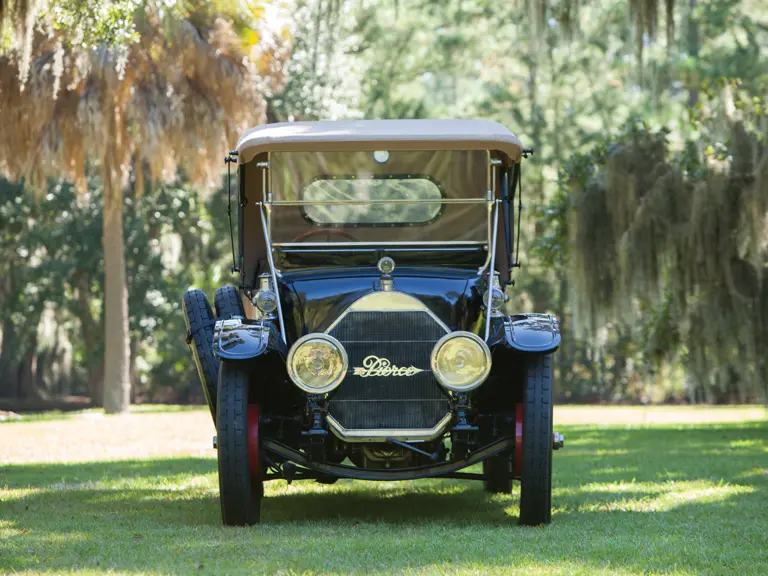
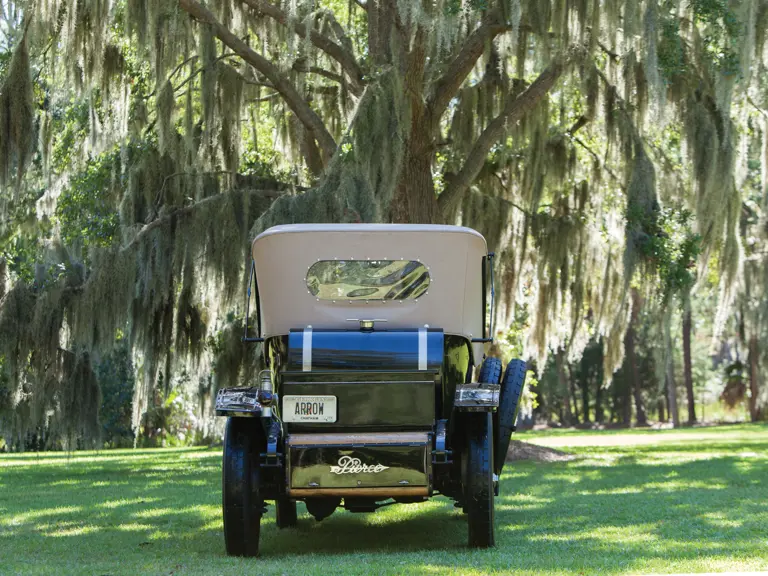

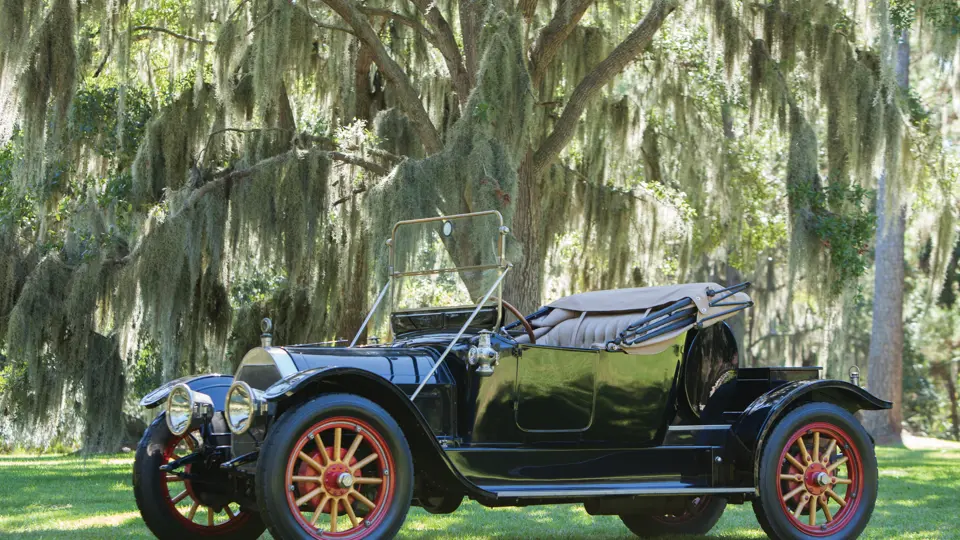
 | Amelia Island, Florida
| Amelia Island, Florida
